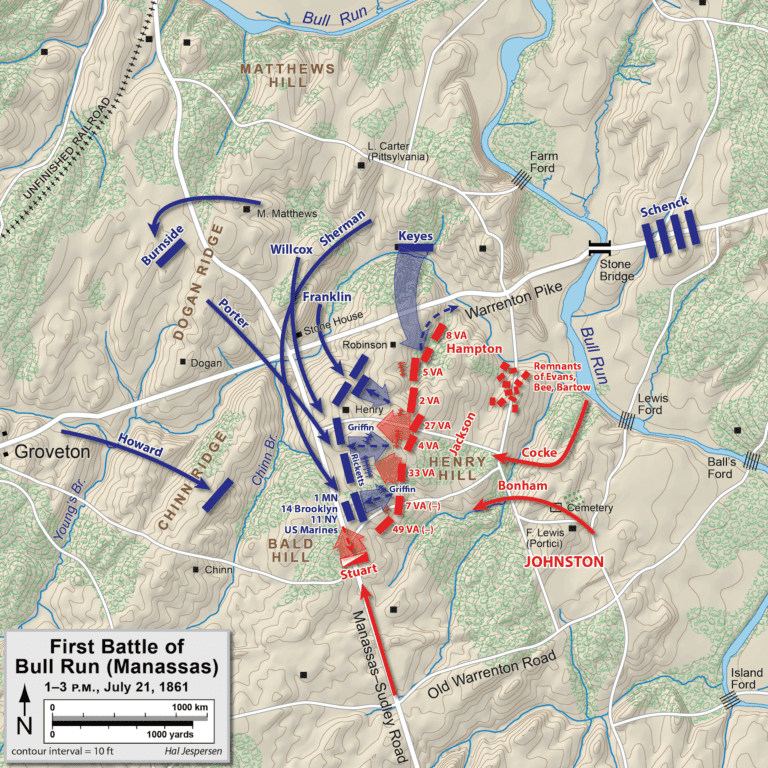Located in Prince William County, Northern Virginia, the Manassas National Battlefield Park is home to the battle sites of two important American Civil War battles: the Battle of First Manassas (also known as the First Battle of Bullrun) and the Battle of Second Manassas (also known as the Second Battle of Bullrun).
Attracting over 700,000 visitors annually, the Manassas National Battlefield Park features several fascinating historical sites and the Henry Hill Visitor Center. This museum focuses exclusively on the Battle of First Manassas.
One of the most famous battles of the American Civil War, the Battle of First Manassas marked the first major land battle of the war.
The bombardment of Fort Sumter had happened just three months prior, and Union forces were confident that they could make short work of the Confederate armies. The public in the North was also convinced of their side’s military superiority, and there was a widespread desire that the Union Army should march straight to Richmond, Virginia, the Confederacy’s capital. This over-optimistic outlook was to prove costly.
In July 1861, Brig. Gen. Irvin McDowell led 36,000 inexperienced Union troops to Manassas Junction in the hope of launching a surprise attack on Brig. Gen. P. G. T. Beauregard’s Confederate Army. It was not to go smoothly.
General Beauregard had been made aware of the approaching Union soldiers and had massed some 20,000 troops; these forces were soon to be joined by an additional 9,000 reinforcement troops under the leadership of General Joseph Johnston.
Crowds of civilians gathered on the morning of 21 July in anticipation of the war’s first land battle. The battle began with three Union regiments crossing the Bull Run tributary.
The Confederate forces were pushed back to Henry House Hill. The Virginia Brigade, commanded by General Thomas J. Jackson, was lying in wait. Shielded from gunfire on the reverse of the hill, Jackson’s men could repel the Union Army’s advance. (It was here that Jackson received the famous moniker “Stonewall”.)
In addition to the Virginia Brigade’s effective defensive volleys, Confederate cavalry under J.E.B. Stuart made a charge on a Union Army flank and were able to capture the Union artillery.
McDowell’s troops were soon on the retreat, making a hasty, disorganized dash back across the Bull Run.
The result of the first land battle of the American Civil War was an apparent Union defeat. Both sides realized that they had a lot to learn about this new kind of warfare, an industrialized war the likes of which the world had yet to see.
Around 60,000 soldiers were present for the Battle of First Manassas on 21 July 1861, though less than two-thirds of them were ever engaged. Both armies suffered from inexperience, a lack of training, ill-discipline, and poor morale. Although larger, more ferocious battles would soon eclipse the casualties of that day, the North and South governments were shocked by the bloodshed. As Confederate President Jefferson Davis remarked, “We have won a glorious but dear-bought victory.”
Almost 1,000 men lost their lives during the Battle of First Manassas, and approximately 2,500 were wounded – a dark foreshadowing of the tragedy that lay ahead.
Continue exploring the history of the American Civil War in Virginia with more of our Virginia Civil War Battlefield Guides.

Ready to explore the battlefield for yourself? Browse our full selection of American Civil War Battlefield Tours.
Please contact us if you have any questions about our tours or services.